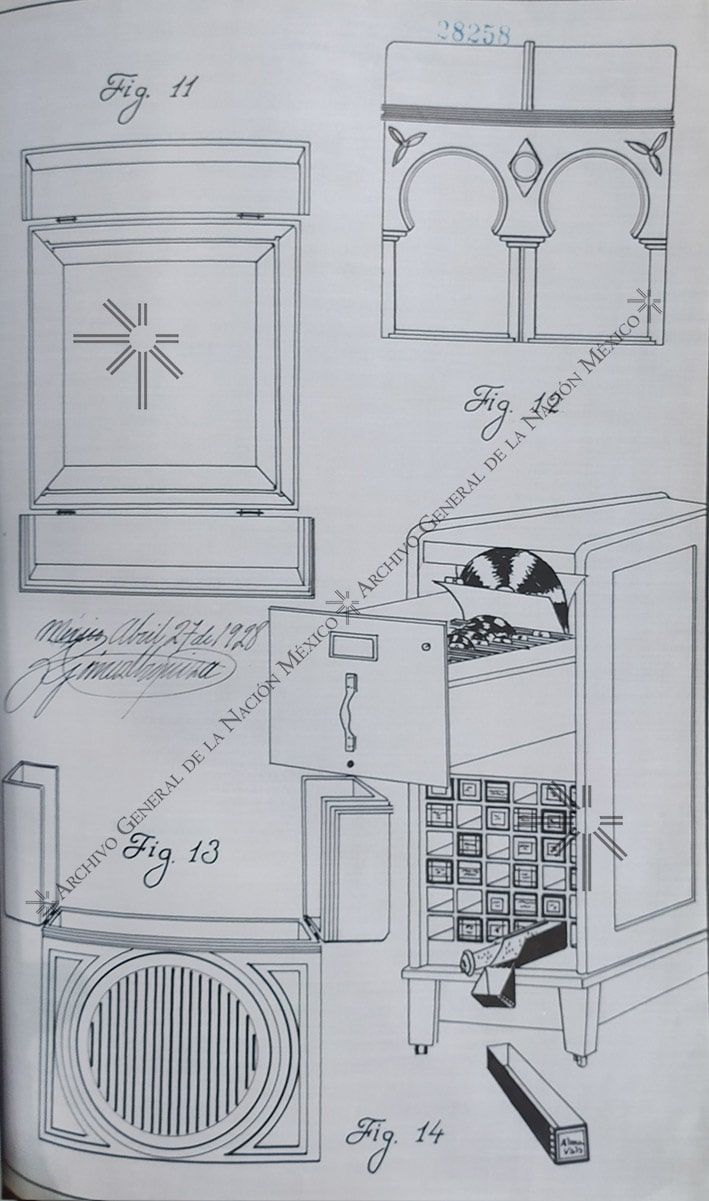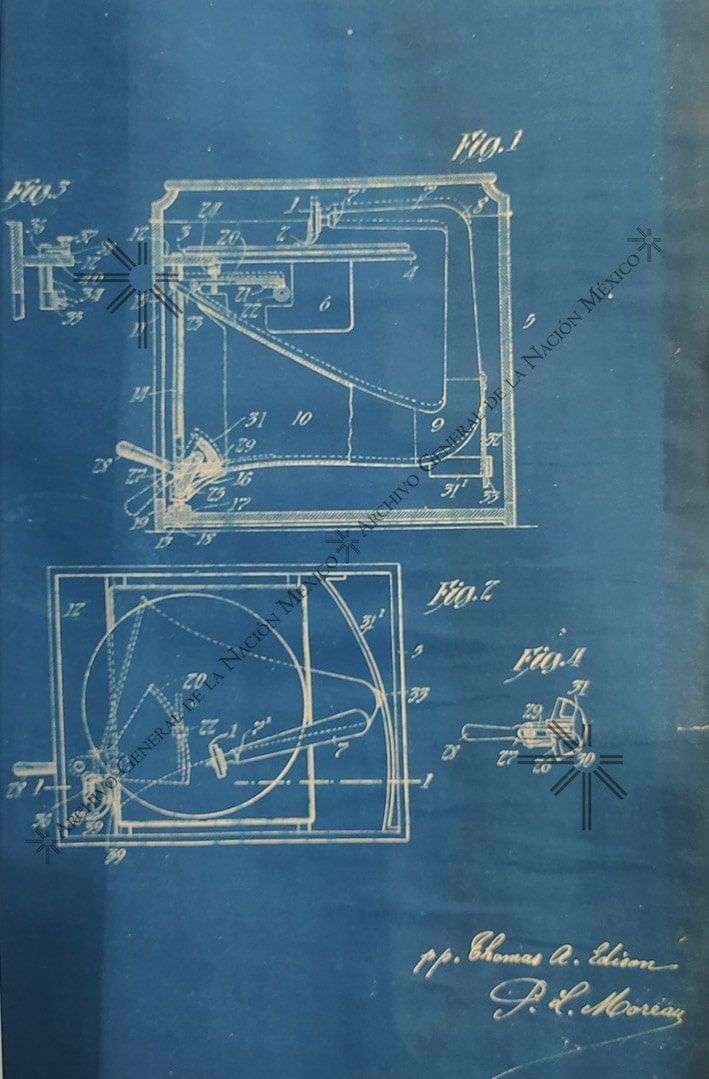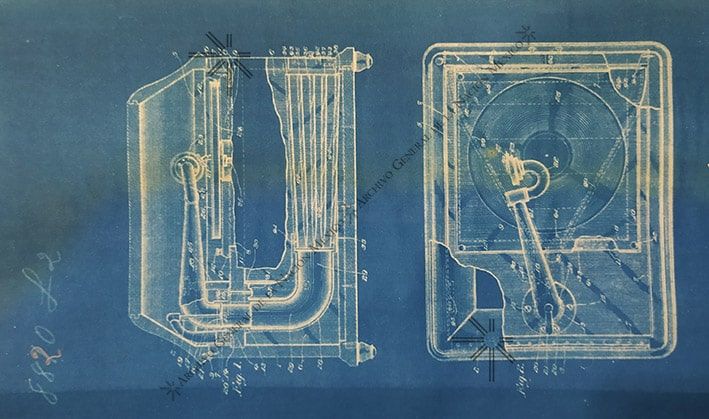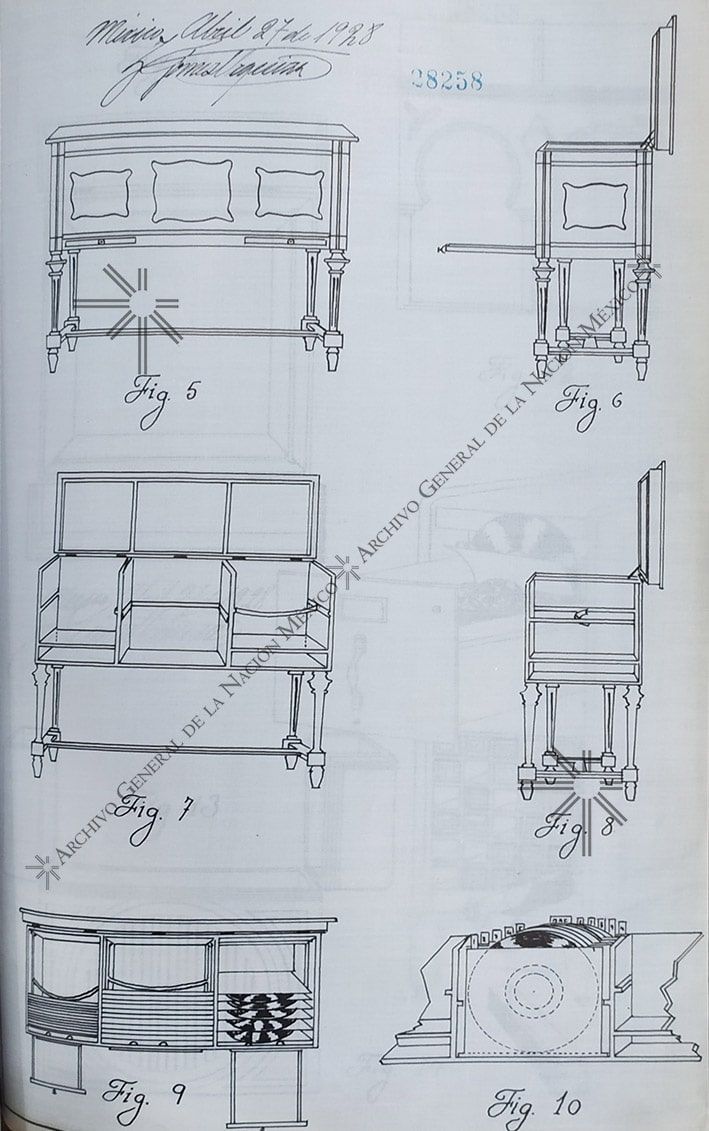Recording and Preserving Music: A History of the Phonograph
Have you ever wondered how the process of recording, preserving, and playing music was carried out in the early years of phonograph records?

Nowadays it is very easy to store your favorite songs through a digital platform, a mobile device, a portable player, or through a storage unit to organize the soundtrack of your life, with the possibility of choosing your favorite song for each situation.
But have you ever wondered how this process of recording, preserving, and playing music was carried out in the early years of phonograph records? Join us to answer this question from the Patents and Trademarks collection, which takes us back to the Mexican inventiveness of the 20th century.
The phonograph, invented by the American Thomas Alva Edison in 1877, revolutionized the way of experiencing sounds by allowing to listen to the previously recorded through a cylindrical device that became the first sound reproduction system. From this creation, in 1888, the German Emile Berliner created the gramophone, an electromechanical instrument to record and reproduce sound from a flat disc and not utilize a cylinder as the phonograph did.
With the gramophone, at the beginning of the 20th century, the voices of great singers and performers began to be heard without being subject to the availability of a live performance. This led Emile Berliner to partner with American businessman Eldridge Johnson to create the phonograph record company called the Victor Talking Machine Company. By 1910, Berliner and Johnson had dominated the nascent music industry with the popularization of records, leaving behind cylinder-based reproduction.

By 1919, the patent obtained by Emile Berliner expired, which led to the opening of more record companies. With the increase in the production of these sound pieces, new practices were developed, not only to record and reproduce the world of sound but also to store the various records used in the incipient radio stations, dance halls, and private amateur collections. To meet the new needs, products such as filing cabinets and cases were created to preserve and organize phonographic records.
Mexico was no stranger to the efforts of inventors all over the world to improve sound experiences. The 1920s not only represented the end of the armed struggle between the revolutionary tendencies, the appeasement of the local powers, and the construction of a new State, but also an important impulse to the cultural and creative activity. Therefore, it is not surprising that in that hectic decade there were minds in our country dedicated to solving technical problems related to the nascent music industry and musical life. Thus, at the end of the decade, two Mexicans submitted their inventions for patent registration to the Industrial Property Department of the Ministry of Industry, Commerce, and Labor.

The first of these devices arrived in 1926 under the name of the phonographic file cabinet and was created by the lawyer Agustín Martínez Anaya. The latter, starting from a box made of wood, metal, and other appropriate materials, created a system that allowed the rotation of the disc outside its compartment to take it easy. This was possible thanks to a rod that, when operated by buttons, tilted the discs that were in a series of spaces arranged parallel and perpendicular to the bottom of the box.
This first invention provided the basis for easy and convenient cataloging, but two years later it would be challenged by a new one. In 1928, Zacarías Gómez presented his case to preserve and order phonographic records. The so-called universal record case was described as a very convenient invention for phonographic records of any size and thickness, since, it was argued, it allowed to keep them protected against alterations caused by temperature and made possible a good arrangement that made it easier to find the desired record.

Like the first invention mentioned, a box was used in which the discs were placed, but these were kept in cases that prevented them from warping or suffering any deterioration. The phonographic supports were ordered alphabetically from a capo or tab with the letter with which the name of each record began to remove it from each compartment and return it easily.
Although these inventions of the early twentieth century seem very simple today, at that time they marked the foundations for the beginning of the ordering, classification, and safeguarding of sound archives. It is an enigma to know the future destiny of such inventions and how they were integrated into the daily life of the Mexicans of that time. Discover it through AGN collections.




